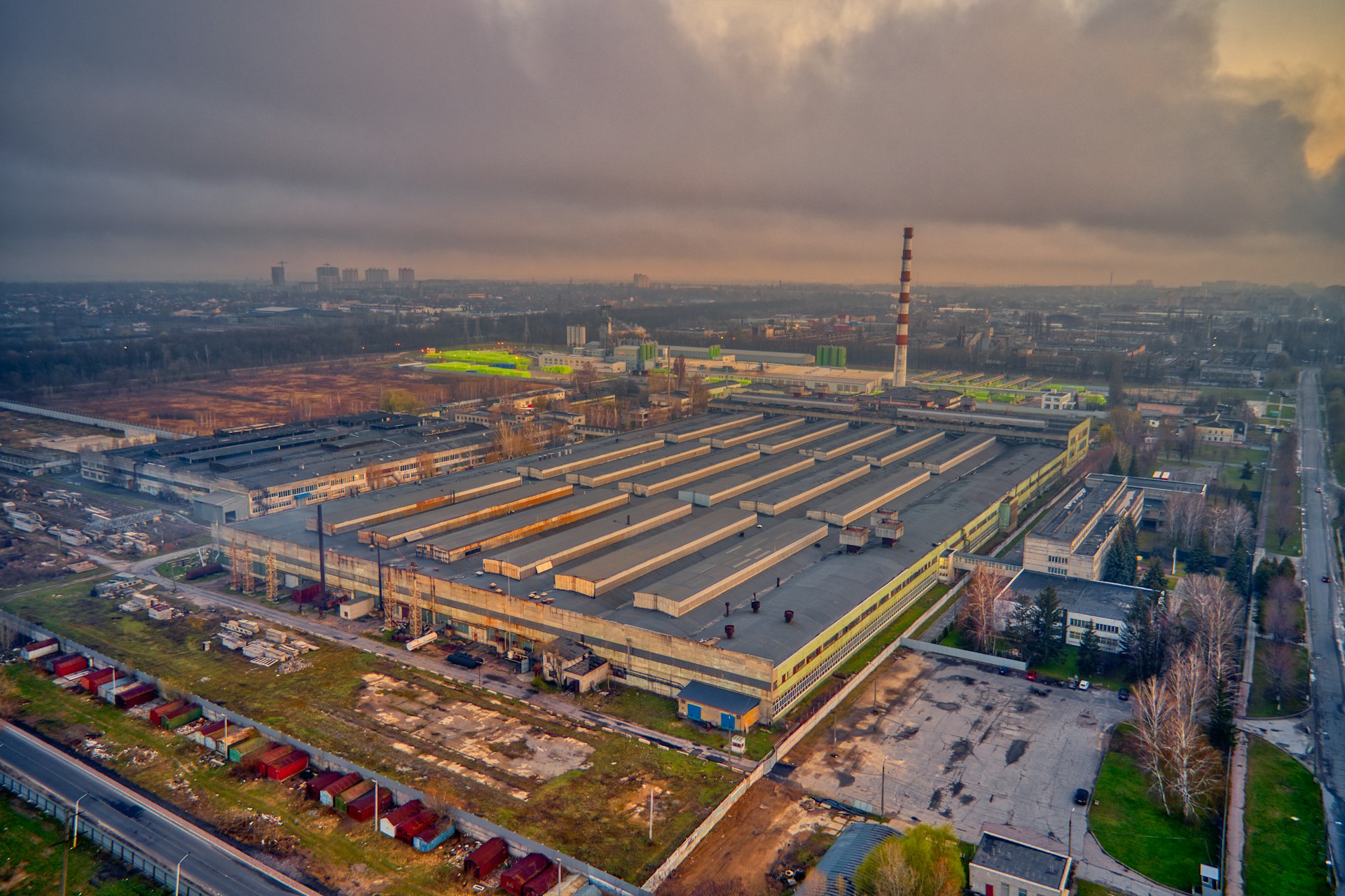Industrial Real Estate's Next Chapter: Navigating the E-Commerce Boom


Photo by Maksym Diachenko on Unsplash
The E-Commerce Revolution: Driving Industrial Real Estate’s Transformation
The explosive growth of digital commerce has become the defining force behind the transformation of industrial real estate. As consumer habits continue to shift toward online shopping, the demand for modern, well-located warehouse and logistics facilities has surged. This new era challenges property owners, investors, and logistics operators to rethink their strategies, adapt to evolving tenant needs, and capitalize on emerging opportunities. Understanding these changes is essential for those seeking to thrive in the future industrial landscape.
Rising Demand for Modern Warehousing: Key Drivers and Implications
Online sales are projected to reach 23% of total retail by 2025, up from previous years, with e-commerce growth showing no signs of slowing. This surge is driving unprecedented demand for large-scale, technologically advanced logistics facilities [1] . Prime locations near transportation hubs and major urban centers-such as Atlanta, Houston, Indianapolis, and Chicago-are especially sought after due to their efficiency in fulfilling same-day and next-day delivery promises [2] .

Photo by Yue WU on Unsplash
The competition for these locations has led to rising rental costs and increased pressure to develop or retrofit facilities that can meet the technological and operational requirements of modern logistics. Companies like Amazon have responded by aggressively expanding their logistics networks, signing over 31 million square feet of new leases in 2024 alone. Their renewed focus on large fulfillment centers and cross-dock facilities highlights the market’s shift toward high-throughput, high-efficiency operations [3] .
Innovation and Technology: The New Standard in Industrial Facilities
Warehousing is evolving far beyond simple storage. Today’s facilities increasingly feature high clear heights (often 36 feet or more), sophisticated dock systems, and advanced materials handling technology. Automation, robotics, artificial intelligence, and smart energy management systems are rapidly becoming standard, supporting faster, more reliable order processing and distribution [1] .
Investing in these capabilities can be costly, but it is essential for long-term competitiveness. Owners and operators considering upgrades should assess their properties’ infrastructure, identify automation opportunities, and explore partnerships with logistics firms or technology vendors. For those developing new projects, prioritizing flexible, future-proof design will help attract top e-commerce and third-party logistics tenants.
In practice, some owners have successfully modernized older facilities by installing high-speed conveyor systems, temperature-controlled zones, and digital inventory management platforms. While these investments may require significant upfront capital, they can yield higher rental rates and longer tenant commitments.
Urban Infill and Last-Mile Logistics: Capturing the Growth of Same-Day Delivery
The race for ever-faster delivery has made last-mile logistics a central focus of industrial real estate strategy. Urban infill sites-once overlooked for industrial use-now command premium values thanks to their proximity to dense population centers. These properties support same-day and next-day delivery models, which are increasingly expected by consumers [1] .
Developers and investors interested in this segment should conduct careful site selection, considering factors such as access to major highways, traffic patterns, and local zoning regulations. Navigating these challenges may involve working closely with municipal authorities, adapting building layouts for restricted urban footprints, and investing in sustainable design to meet community expectations.
For example, a logistics operator might repurpose an underutilized city warehouse by retrofitting it with automated picking systems and optimizing loading docks for rapid turnover. This approach can deliver significant value, but may require creative problem-solving and collaboration with local stakeholders.
Reshoring, Supply Chain Resilience, and New Industrial Opportunities
Beyond e-commerce, supply chain resilience and reshoring initiatives are fueling major changes in industrial real estate. Companies are reconfiguring their distribution networks, shifting from a focus on pure efficiency to one of resilience and flexibility. Since 2021, estimated U.S. manufacturing investment has topped $300 billion, driving demand for new facilities ranging from semiconductor plants to medical supply warehouses [1] .
For landlords and developers, this trend presents diverse opportunities-but also new requirements in terms of infrastructure, utility capacity, and zoning. Those interested in capitalizing should engage with economic development agencies, stay informed about federal incentives (such as those under the Chips Act), and consider forming joint ventures with manufacturers or logistics partners.
Prospective investors may also wish to monitor sector-specific news sources or industry associations for updates on reshoring trends and new facility announcements.
Investment Strategies and Market Outlook: Navigating Opportunities and Risks
While the past decade saw rapid expansion, the industrial sector is now entering a period of stabilization. Occupiers have gained more leverage in select markets, and macroeconomic factors-including interest rates and global trade dynamics-are increasingly influential [4] . Investors must weigh the risk-reward profile of different asset types, from large modern warehouses to specialized data centers supporting AI-driven logistics.
Those looking to invest or expand should conduct rigorous market research, consult with experienced commercial real estate advisors, and remain agile in adapting to changing tenant expectations. In some cases, portfolio diversification-across property types, geographies, or tenant industries-can help manage risk and capture emerging opportunities.
To stay current on market dynamics, consider subscribing to commercial real estate publications, joining industry organizations, or attending sector-specific conferences. For guidance on specific investment opportunities, contact a licensed commercial real estate broker or seek advice from a financial advisor specializing in industrial assets.
Actionable Steps for Accessing Industrial Real Estate Opportunities
Whether you are a business owner seeking warehouse space, an investor evaluating market entry, or a developer planning new projects, consider the following steps:
- Define your requirements: Assess your operational needs, including location preferences, facility size, technological capabilities, and sustainability goals.
- Research local markets: Use established commercial real estate platforms or contact a regional brokerage to identify available properties.
- Evaluate incentives: Reach out to economic development agencies for information on grants, tax incentives, or government programs supporting industrial expansion.
- Consult experts: Engage with logistics consultants, architects, or construction firms experienced in modern industrial development.
- Stay informed: Monitor reputable news sources and subscribe to industry newsletters for ongoing market updates and investment trends.
If you are interested in large-scale investments or development, you can contact national commercial real estate brokerage firms such as CBRE, JLL, or Cushman & Wakefield by visiting their official websites or searching for their local offices. Always verify the credentials of any professionals or organizations before engaging in business discussions.
Potential Challenges and Solutions
The growth of e-commerce brings both challenges and opportunities. Rising construction and land costs, competition for prime sites, and the need for substantial technology investment are common barriers. Solutions include exploring secondary markets for lower-cost opportunities, forming strategic partnerships, and leveraging government incentives for infrastructure improvements.
Additionally, evolving tenant expectations-such as demands for sustainability, flexible lease terms, or on-site amenities-require landlords to remain responsive and innovative. Keeping open channels of communication with tenants and industry peers can help anticipate shifting needs and adapt strategies effectively.
Key Takeaways
The future of industrial real estate in the e-commerce era is defined by rapid innovation, rising demand for modern logistics facilities, and a shift toward urban infill and last-mile delivery. By embracing new technologies, staying agile in investment strategies, and maintaining strong market intelligence, stakeholders can position themselves for long-term success. For the most accurate and up-to-date information on available properties and market trends, connect with experienced commercial real estate professionals and consult recognized industry resources.
References
- [1] New Blueprint Partners (2025). 2025 Industrial Real Estate Outlook: Market Trends, Opportunities, and Strategic Insights.
- [2] CRE Insight Journal (2024). How E-Commerce is Impacting Industrial Real Estate.
- [3] NAI Hiffman (2025). Amazon’s Industrial Comeback: How the E-Commerce Giant is Reshaping Warehouse Demand in 2025.
- [4] Cresa (2025). Shifting Dynamics in Industrial Real Estate: Key Trends for CRE Leaders in 2025.






